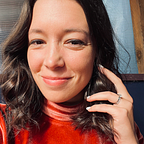What can we learn about natural wine through data?
Natural Wine is Cool blogger Ilaria and I teamed up to try to answer some core questions that we had about natural wine. Have you heard of natural wine? Does it seem like a fad to you? We wanted to dig into the data to confirm or disprove some of our key hypothesis.
Ilaria shared a commentary on this data, providing more context and explanation of the natural wine world — I highly recommend checking it out! This blog post will focus a bit more on the technical methodology used to answer these questions.
What is natural wine?
If you ask a dozen wine experts this question, you will likely get fairly different answers. Some of those answers will also include terms like “biodynamic” and “organic” which are almost sister concepts to natural wine. In an effort to understand how the majority describes natural wine, we collected definitions of the three terms from over 60 blogs. We then did a word frequency count to determine which words were used most to describe each term. Using matplotlib venn diagram, we can visualize the overlap between the top 20 words used to describe each type of wine. The size of the words also indicates how prevalent that word is.
Next, we wanted to understand the growth of the natural wine trend.
Using the Wikipedia Page Views API, we were able to get monthly page views of different types of wine pages by language. We bucketed “natural wine” topics and “wine” topics, and then for simplicity, used English page views as a proxy for New World (US, Australia, New Zealand, etc) and Spanish, Italian, Portuguese and German for Old World. We are very aware that Old World and New World wine regions do have language overlap (for example, Spanish is spoken in Chile). However since we didn’t have the ability to breakdown by country, just language, we decided this was sufficient.
The graph below demonstrates growth in monthly page views, indexed on the earliest value we were able to get, July 2015. Here we can see that the page views for natural wine are growing at a much faster rate than wine. Worth still noting that wine page views are ~5x the volume of natural wine when we aren’t looking at it from a growth perspective. It’s also quite interesting that Old World and New World follow relatively the same trend line — and each have spikes at different points (we’ll get into this more next).
One thing we were very curious about in the graph above is what caused the large spikes in new world natural wine wikipedia page views. After some research using Google search trends and Ilaria’s expertise about the natural wine world, we concluded based on timing that these spikes were influenced by public events and influencers in the wine world. Famous rapper Action Bronson was a big propellant with his natural wine vlogs and launching a wine label; RAW Wine fairs also likely had a large influence.
So beyond the trends, what is different between New World and Old World natural wine?
First, we were interested in measuring the supply of natural wine and where it’s coming from. While the producers are too fragmented to get accurate production levels, we can use the wines listed on natural wine bar menus as an interesting proxy for at least the supply of natural wine that is widely accessible.
After scraping 23 natural wine bar lists from across the globe, cleaning the data to get an accurate country of origin, we are able to see the breakdown of where natural wine is coming from. 46% is from France, with the next highest being Italy at 20%. This is fascinating when you keep the context that Italy, France and Spain are thought to be fairly equal in wine production, and California not far behind.
Since we scraped wine lists from all over the world, we were also curious if this was influenced by where the wine bar was from (Old World or New World). Below we can see that French wine is the most popular in both regions, but the breakdown of other countries depends on which world the wine bar is located in. New World wine bars, for example, feature more Californian, Australian, etc.
In conclusion,
Natural wine data is quite hard because the producers are very fragmented and small. There is also not a clear definition or label identifier for whether a wine is natural or not. However using the proxies above, we were able to see that natural wine interest is growing, it’s global and still fragmented.
